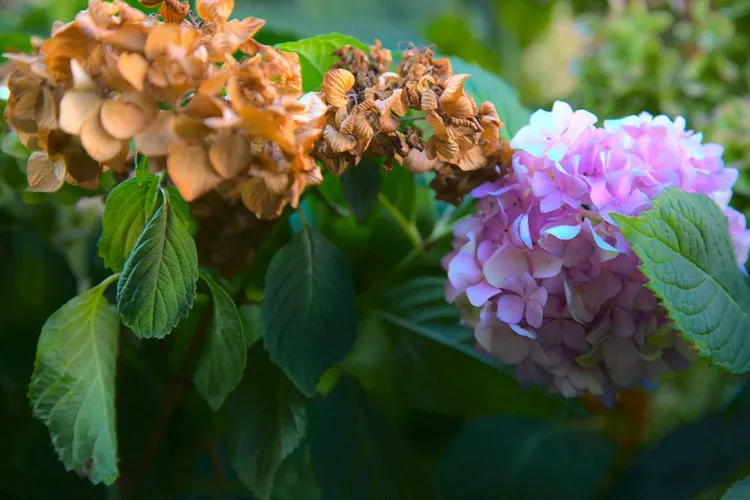How do you save a heat-affected hydrangea? What are the signs of a hydrangea suffering from heat stroke? What are the strategies to restore and protect your hydrangeas from high temperatures?
Hydrangeas are the summertime showpieces of our gardens, sublimating the outdoors with their superb, colorful inflorescences all summer long. But, after a hot and sunny day, you notice that your flowering shrub looks sad and seems to be wilting? So how to save an overheated hydrangea and bring it back to life? Today we focus on what to do to revive the plant that has suffered a heat stroke. As a bonus, we shall reveal some prevention tips.
How to Save an Overheated Hydrangea?
Beautiful hydrangeas are in full bloom during the hot season, but the scorching sun and scorching heat can take their toll. Hydrangea heatstroke manifests itself in softened, yellow, dry leaves. Flowers may begin to wilt and the plant looks sunburned. Do not panic, because it is quite possible to revive your shrub, but it is important to act quickly to limit the damage. Here’s a look at the factors to consider.
Check Plant Exposure
Different hydrangea varieties have different light requirements. Most species do best in partial shade, while panicle hydrangea and smooth hydrangea prefer full sun. The wrong location is likely to cause the plant to suffer as soon as the first heat arrives, with leaves and flowers rapidly burning. It is therefore essential to place it in suitable conditions. If you notice these symptoms in your hydrangea, then check its exposure. If it is also exposed to the sun, act as quickly as possible. For pot-grown hydrangeas, all you have to do is move them. However, a hydrangea in the ground will require more attention. You must create a shade in the garden by putting a shade sail over the plant.
It Is Important to Water the Plant to Save an Overheated Hydrangea
An essential step in hydrangea care after flowering, watering is a must in case of hot weather. It’s simple: the plant is probably thirsty. So water abundantly, preferably early in the morning, giving preference to rainwater. Otherwise, use filtered or aerated water. Be sure to irrigate at the foot of the plant without wetting the leaves to prevent them from burning under the magnifying effect. A sunburned hydrangea will need a lot of water, so it’s important to be vigilant and check the soil regularly. Mulch the shrub with straw or wood shavings to keep it moist.
Cut Off Spent Flowers to Relieve the Plant
Under the effect of strong sunlight, the flowers of hydrangeas can literally burn out. It is a good idea to remove them so that the plant can save its energy and concentrate on its survival.
Prune the Affected Parts of the Shrub
To save an overheated hydrangea, you must cut everything damaged by the heat wave. Prune the blackened stems and keep only those that are green and vigorous. Then trim off any dry or damaged leaves. Once the hydrangea has been trimmed, it will concentrate all its energy on the healthy parts to get them going again.
How to Protect Hydrangeas from the Heat?
Prevention is better than cure! To avoid having a hydrangea burned by the sun, it’s crucial to take preventive measures. Here are a few recommendations to help you protect your hydrangeas from heat:
- Always respect the plant’s need for sunlight. If the heat wave is coming, be sure to install a shade sail to protect the plants.
- A water-intensive plant, especially in summer, the hydrangea requires regular watering. Mulch the soil around the roots to retain moisture as long as possible.
- Water potted plants every morning by immersing the container in a basin of water for a few minutes. Allow to drain well before placing back in the saucer.
- Avoid pruning hydrangeas during heat waves (unless the plant is already burnt or diseased). Heat already creates stress on the plant, and pruning will only increase its negative effects.
- Do not repot the plant, as it is prone to transplant shock in hot weather.
- The hot season is not the right time to apply large quantities of fertilizer. It is possible to fertilize lightly once in July to prolong the hydrangea’s flowering period. Other fertilizers should be applied in spring.
Also read: Cut off Faded Hydrangeas: No More From Now On!


